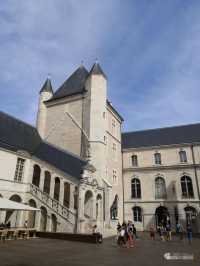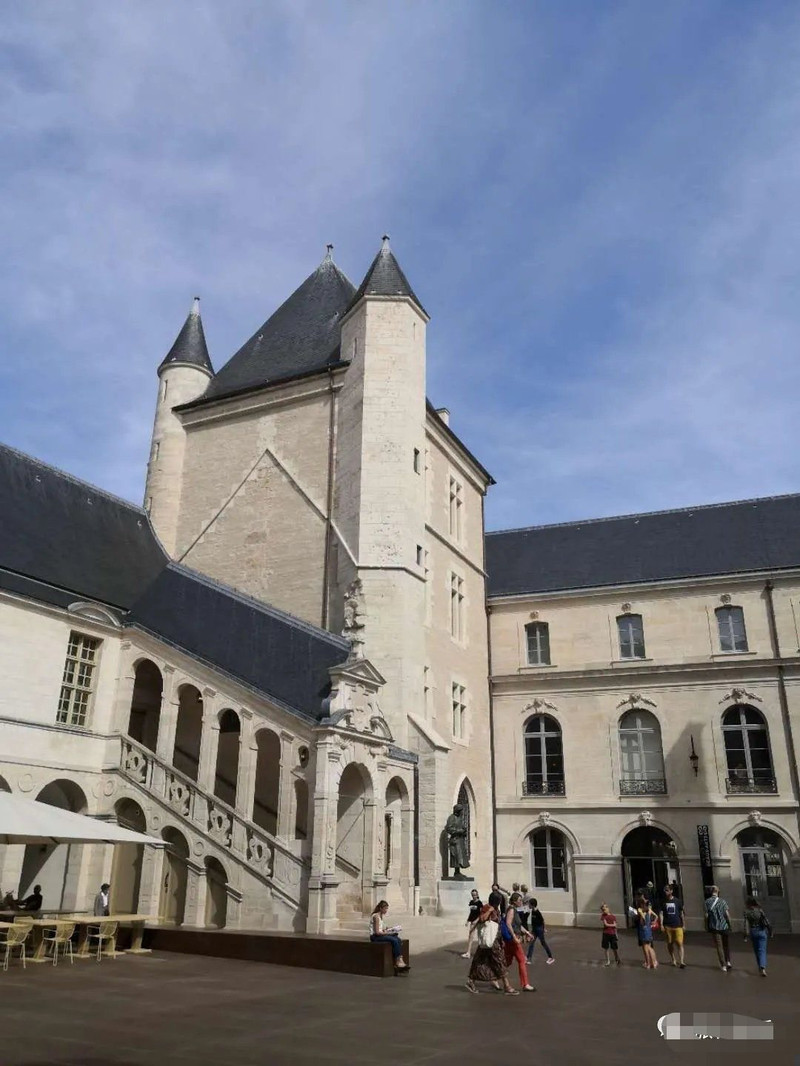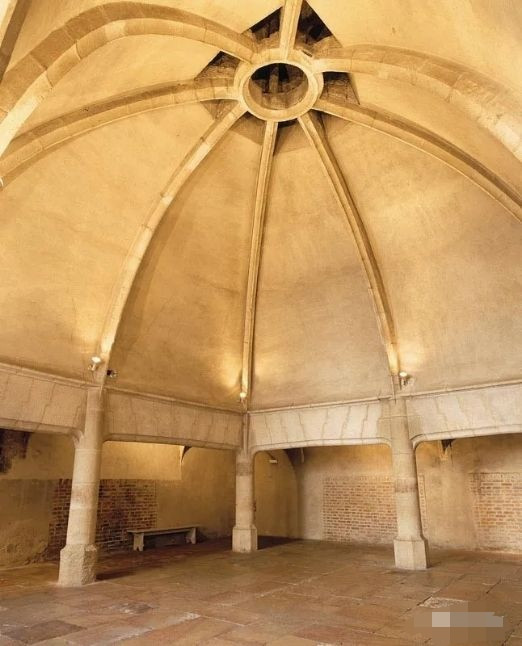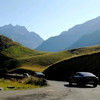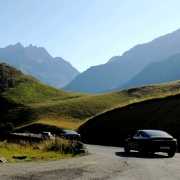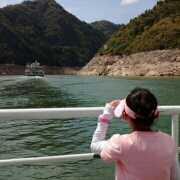The front of the Duke's Mansion resembles several "mountain" shapes that protruded into Tahrir Square, and three courtyards are surrounded in the middle. On the far right Bar Courtyard (La Cour de Bar), there is Barta (La Tour de Bar). After becoming Duke of Burgundy in 1363, daring Philip quickly set about renovating the former residence of Duke Capé. In 1365, he built a new tower with a fireplace in the Great Hall, on the ground floor of the former Church of Saint-Chabel. The name Balta is derived from the Anjon King Barr, who was imprisoned here from 1431 to 1437. The stone carvings above the top staircase (L'escalier de Bellegarde) on the edge of Balta are very beautiful and a good place for photography. There was a exactly the same staircase on the opposite side of the Duke's House Logis, which has now disappeared. Looking at the empty place in the middle of the door, Think of the various cut-out wood carvings seen in houses across the Jiangnan. Revolutions are similar everywhere. On the south side of Bar Courtyard is the kitchen of the former Duke's Mansion (Les cuisines ducales), rebuilt in 1433 during the good man Philippe. The 12-meter-long hall is supported by eight pillars to lift the central vault. The pointy vault has a hole in the center to emit the fume from cooking. The three-sided wall is a huge barbecue fireplace. Standing in front of the fireplace, I was struck by its size: each of the six fireplaces was said to be able to barbecue a whole cow. Up to thirty chefs were busy here, and you can imagine the scene of the Duke's house bells ringing. Four large windows under the high pointed arch on the eastern wall of the kitchen brought light to the kitchen. Outside the kitchen, there was once a place of the same size for bread and pastries (1853, to be demolished for the new gallery), which enclosed a small courtyard with a well in the middle of which was a water-filled well, and today only the empty kitchen and the well can be seen.
;
Palace of the Dukes and States of Burgundy Review
4.4 /546 Reviews
Palace of the Dukes and States of Burgundy Frequently Asked Questions
More Questions
Preston_Dominguez: Palais des Etats de Bourgogne, 21000, Dijon, France
1 Answer
Jeremy_Dodson: I recommended Palace of the Dukes and States of Burgundy,Church of Notre Dame of Dijon,Place de la Liberation,Porte Guillaume,Place Francois Rude
1 Answer
Messiah_Dillon: Here are some hotels near Palace of the Dukes and States of Burgundy: Aparthotel Adagio Access Dijon République,Kyriad Hotel Dijon Gare,Grand Hotel La Cloche Dijon MGallery,Ibis Styles Dijon Central,Odalys City Dijon les Cordeliers
1 Answer
Judah_Dillard: You could try Restaurant William Frachot,L'age de Raisin,Le Bouchon du Palais,Au Moulin a Vent,Caveau de la Chouette
1 Answer
Popular Destinations
Quebec City Travel | Shangri-La Travel | Foshan Travel | Paris Travel | Augusta Travel | Wuxi Travel | Cesme Travel | Jeju Travel | Pyongyang Travel | Arnold Travel | Buckeye Travel | Maceio Travel | Bolivar Travel | Cardiff Travel | Opatija Travel | Speyer Travel | Laos Travel | Udon Thani Travel | Fuliang Travel | Muskoka Lakes Travel | Furnace Creek Travel | Jinzhai Travel | Ajax Travel | Harrodsburg Travel | Trinita d'Agultu e Vignola Travel | Vologda Oblast Travel | Foxborough Travel | North Wildwood Travel
Recommended Attractions at Popular Destinations
Bangkok attraction near me | Tokyo attraction near me | Manila attraction near me | Hong Kong attraction near me | Taipei attraction near me | Seoul attraction near me | Los Angeles attraction near me | New York attraction near me | Shanghai attraction near me | Kuala Lumpur attraction near me | Shenzhen attraction near me | Osaka attraction near me | Singapore attraction near me | Guangzhou attraction near me | London attraction near me | San Francisco attraction near me | Beijing attraction near me | Macau attraction near me | Bali attraction near me | Paris attraction near me | Ho Chi Minh City attraction near me | Orlando attraction near me | Jakarta attraction near me | Chicago attraction near me | Phuket attraction near me | Toronto attraction near me | Istanbul attraction near me | Dallas attraction near me | Cebu attraction near me | Seattle attraction near me
Popular Attractions
Universal Studios Florida | Skydeck Chicago | Burj Khalifa | Mirror Maze | Chengdu Research Base of Giant Panda Breeding | The Huntington Library, Art Museum, and Botanical Gardens | The Metropolitan Museum of Art | Statue of Liberty | Car and Carriage Caravan Museum | Antelope Canyon | Oceanographic Museum of Monaco | Hong Kong Disneyland | Livraria Lello | Jinmao Tower Observation Deck | Real Maestranza de Caballeria de Sevilla | La Santa Iglesia Catedral Basílica de la Encarnacion | Saint Mark's Basilica | City Hall Park | Statue du Chevalier Dardennor | Esplanade 3 | Stanley Community Butterfly Garden | Rojas stadions | Penteli - Chalandri creek | 龍尾炮台山 Nan Shan | Jason Aldean: Highway Desperado Tour 2024 | Riverside Golf Club | Laurel Glen Vineyard | Tianmen Mountain | Huis Ten Bosch | Paris Zoological Park
Popular Travelogues
Bangkok Travelogue | Tokyo Travelogue | Manila Travelogue | Hong Kong Travelogue | Taipei Travelogue | Seoul Travelogue | Los Angeles Travelogue | New York Travelogue | Shanghai Travelogue | Kuala Lumpur Travelogue | Shenzhen Travelogue | Osaka Travelogue | Singapore Travelogue | Guangzhou Travelogue | London Travelogue | San Francisco Travelogue | Beijing Travelogue | Macau Travelogue | Bali Travelogue | Paris Travelogue | Ho Chi Minh City Travelogue | Orlando Travelogue | Jakarta Travelogue | Chicago Travelogue | Phuket Travelogue | Toronto Travelogue | Istanbul Travelogue | Dallas Travelogue | Cebu Travelogue | Seattle Travelogue
Popular Ranked Lists
Popular Nightlife Districts in Hong Kong | Popular Premium Hotels in Pokolbin | Popular Family-friendly Attractions Near Xingren | Popular Luxury Hotels Near Bavaro | Popular Luxury Hotels Near Chios | Top 14 Fine Dining in Bali | Top 5 Bars in Copenhagen | Top 9 Clubs in Phnom Penh | Top 3 Premium Hotels in Yavansu Mahallesi | Top 6 Bars in Dublin | Popular Fine Dining in Bangkok | Popular Premium Hotels Near Tumbaya | Popular Luxury Hotels Near Bandol | Popular Family-friendly Attractions Near Linxia County | Top 7 Fine Dining in Dalian | Top 3 Premium Hotels in Bacalar | Top 4 Nightlife Districts in Tokyo | Top 5 Luxury Hotels in Beverly Hills | Popular Family-friendly Attractions Near Tuquan | Popular Family-friendly Attractions Near Weiyuan | Popular Nightlife Districts in Pattaya | Popular Nightlife Districts in Dublin | Popular Nightlife Districts in Taipei | Popular Nightlife Districts in Jinghong | Popular Nightlife Districts in Las Vegas | Popular Nightlife Districts in Shanghai | Popular Nightlife Districts in London | Popular Nightlife Districts in Seoul | Popular Nightlife Districts in Beijing | Popular Nightlife Districts in Chengdu
About
Payment Methods
Our Partners
Copyright © 2024 Trip.com Travel Singapore Pte. Ltd. All rights reserved
Site Operator: Trip.com Travel Singapore Pte. Ltd.
Site Operator: Trip.com Travel Singapore Pte. Ltd.


